List of Macintosh models by case type
This list of Macintosh models by case type contains all case designs used by Apple Inc. for its Macintosh computers. The list is sectioned by general case layout, but inside the sections the order is chronological. Models that used multiple names (like most Performas) are listed only once. Where available, the "form factor" from Apple's datasheets has been used to determine the case designation and the computers that used it. For all-in-one models and notebooks that have the same basic case design, but differ in size, just one type is listed. Also, some models that differ only slightly or internally are listed together, like the two iMac G3s and the Power Mac G4s.
All-in-one
"All-in-one" in the Macintosh sense means that the display is integrated in the computer case. The keyboard and mouse always remained detachable.
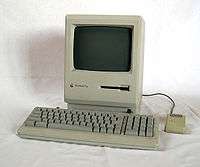

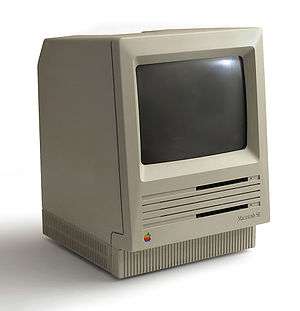
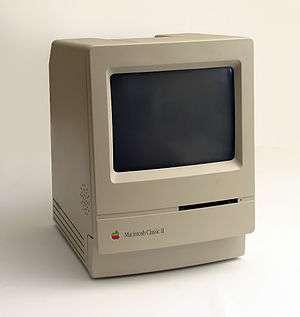
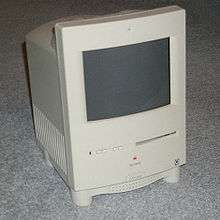
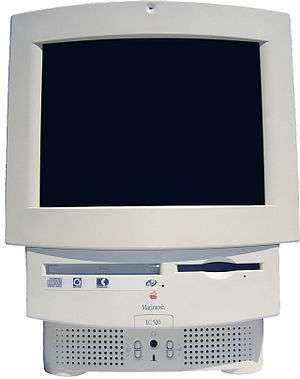
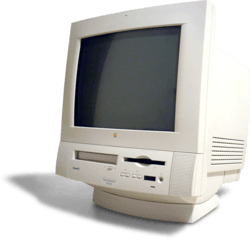
 Twentieth Anniversary
Twentieth Anniversary
20th Anniversary Mac.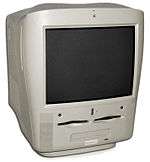 Power Macintosh G3 AIO
Power Macintosh G3 AIO
Power Macintosh G3 AIO
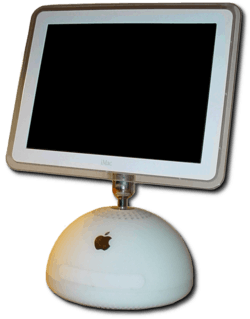
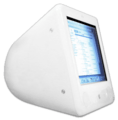 eMac
eMac
eMac

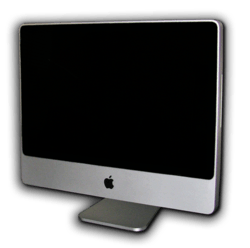

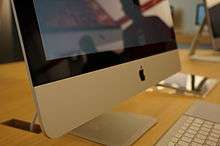
.jpg)
Desktop
The Macintosh II series were the first Macintoshes designed to be placed under the monitor. Apple's most recent desktop offering, the Mac mini, is meant to be set alongside the monitor.
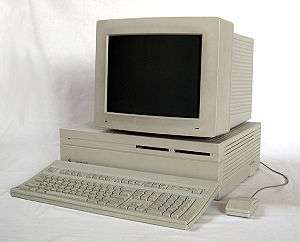
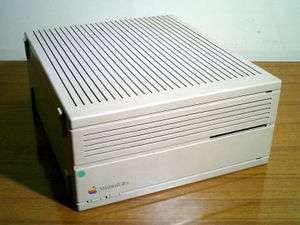
 IIsi
IIsi
Macintosh IIsi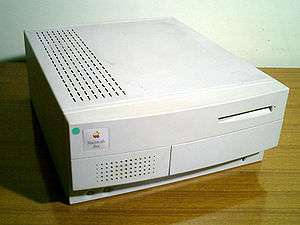
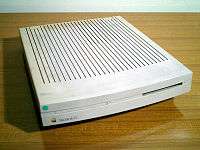 LC
LC
(aka "pizza box")
Macintosh LC
Macintosh LC II
Macintosh LC III
Macintosh LC III+
Macintosh LC 475
Macintosh Quadra 605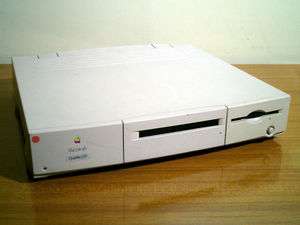
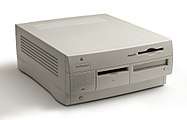 PM 7500
PM 7500
aka "Outrigger"[10]
Power Macintosh 7200
Power Macintosh 7300
Power Macintosh 7500
Power Macintosh 7600
Power Macintosh G3 Desktop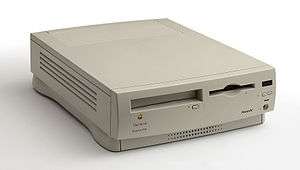
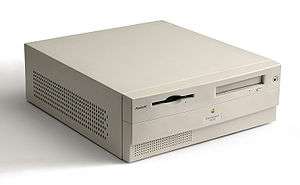
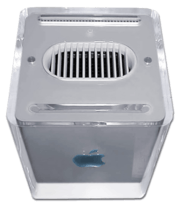 Power Mac G4 Cube
Power Mac G4 Cube
Power Mac G4 Cube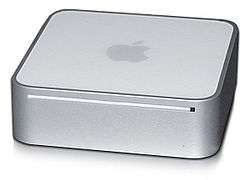
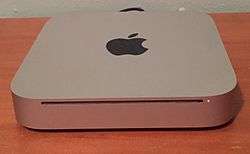 Unibody Mac mini
Unibody Mac mini
Mac mini (unibody)
Tower
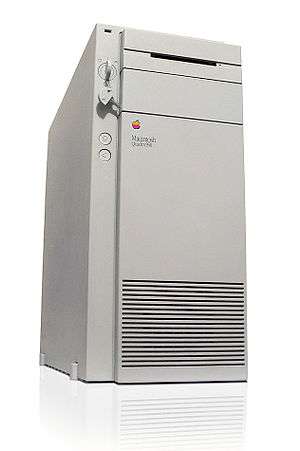
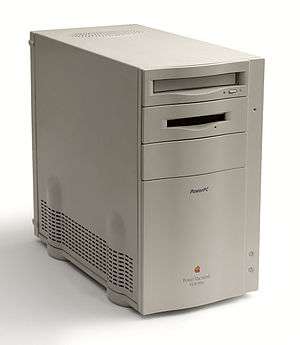
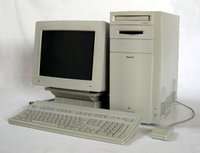
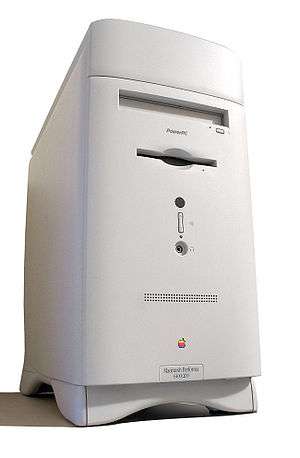
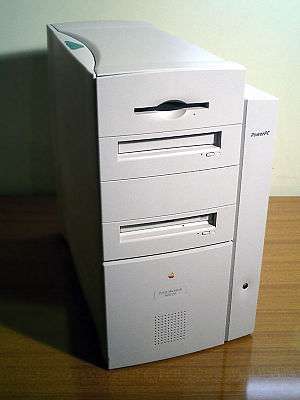
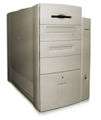
 Power Macintosh G3 (Blue and White)
Power Macintosh G3 (Blue and White)
Power Macintosh G3 (Blue and White)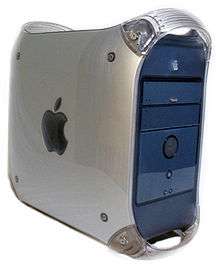 Power Mac G4 Graphite
Power Mac G4 Graphite
Power Mac G4 "PCI Graphics"
Power Mac G4 "AGP Graphics"
Power Mac G4 "Gigabit Ethernet"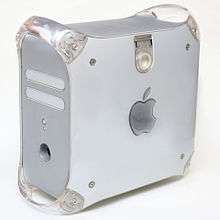
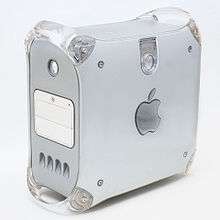
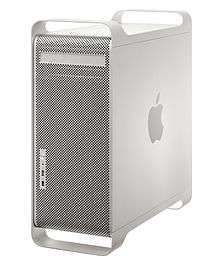 Power Mac G5
Power Mac G5
Power Mac G5
 Cylindrical Mac Pro
Cylindrical Mac Pro
Mac Pro (second generation)
Portable
"Portable" in this case means computers that are able to run on internal batteries - modern computers like the Mac mini are arguably more portable than the "luggable" Macintosh Portable, but have no integrated batteries. All modern portable Macintoshes use the notebook design, which the PowerBook series helped to establish.
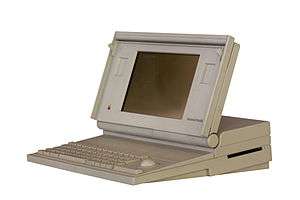 Macintosh Portable
Macintosh Portable PowerBook 100
PowerBook 100 PowerBook 1XX (Except 100 and 190)
PowerBook 1XX (Except 100 and 190)
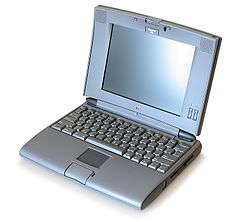 PowerBook 5XX
PowerBook 5XX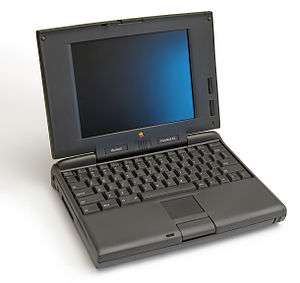 PowerBook 5300
PowerBook 5300 PowerBook 1400
PowerBook 1400 PowerBook 3400
PowerBook 3400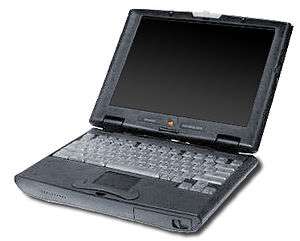 PowerBook 2400
PowerBook 2400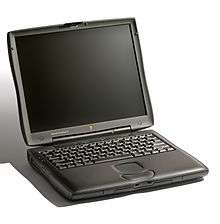 PowerBook G3 (Wallstreet)
PowerBook G3 (Wallstreet)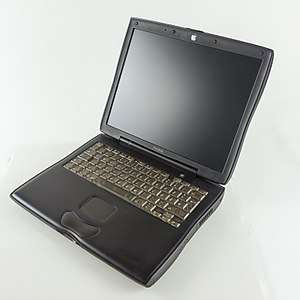 PowerBook G3
PowerBook G3
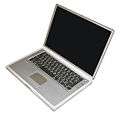 PowerBook G4
PowerBook G4 iBook (white)[18]
iBook (white)[18]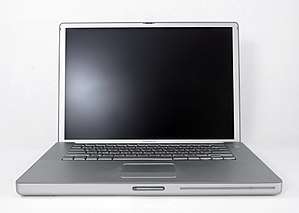 PowerBook G4 "Aluminum"[20]
PowerBook G4 "Aluminum"[20]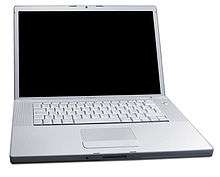 MacBook Pro[21]
MacBook Pro[21]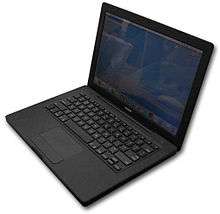
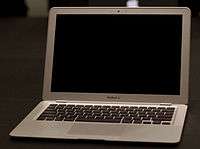 MacBook Air
MacBook Air- MacBook Air (Folding door ports)
- MacBook Air (both sides ports)
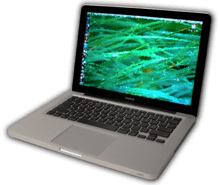 MacBook Aluminum Unibody[23]
MacBook Aluminum Unibody[23].jpg) MacBook Butterfly Keyboard / USB-C[24]
MacBook Butterfly Keyboard / USB-C[24]
Rackmount
"Rackmount" computers use cases that are designed to be screwed into a standard 19-inch rack, a form factor that is mostly used for servers. The Xserve series is the only Macintosh ever specifically designed in this way, with all of the computer models having a height of only one rack unit.

 Xserve Cluster Node
Xserve Cluster Node Xserve
Xserve
See also
Footnotes
- ↑ The optical drive is changed from tray-loading to slot-loading.
- ↑ Available with 15-, 17- and 20-inch screens.
- ↑ Available with 17- and 20-inch screens.
- ↑ Thinner than the original iMac G5 case, with a curved back and integrated iSight camera; available with 17- and 20-inch screens.
- ↑ Distinguishable from iMac G5s by its slimmer, aluminum case and aluminum border around the screen. Available in 20- and 24-inch models, both with 16:10 aspect ratio.
- ↑ Thinner than the original aluminum iMac and made from an aluminum unibody. Available in 21.5- and 27-inch screens with a 16:9 aspect ratio.
- ↑ The current iMac, even thinner than the unibody iMac with a screen that is fully laminated to the glass. Available in 21.5- and 27-inch screens, including "4K" and "5K" resolutions, respectively. First iMac without an optical drive.
- ↑ A professional level iMac with Intel Xeon processors. It comes with a Space Grey color and a 27-inch screen.
- ↑ The case is flipped on its side, creating a minitower.
- ↑ Even though this case was introduced with the Power Macintosh 7200, Apple uses the later "Power Macintosh 7500" as the designation. This case is unofficially known as the "Outrigger".
- ↑ The original Mac mini does not have an IR sensor at the side of the optical drive; also, the back connector layout was changed heavily several times
- ↑ The case is modified, with the floppy drive slot moved to the bottom.
- ↑ This case is a taller version of the Quadra 800 case.
- ↑ This case is a shorter version of the Power Macintosh 9600 case.
- ↑ Distinguished from Power Mac G5 by its twin optical drives and different arrangement of ports.
- ↑ Uses a touchpad instead of a trackball.
- ↑ This computer is available in various colors.
- ↑ Available in 12- and 14-inch diagonal size.
- ↑ Uses an opaque keyboard and slot-in optical drive.
- ↑ Available in 12-, 15- and 17-inch diagonal size.
- ↑ Available in 15.4- and 17-inch diagonal size.
- ↑ Available in black or white.
- ↑ Available in 13.3- (MacBook, later McBook Pro), 15.4- and 17-inch (MacBook Pro) diagonal size. The 17-inch model has a fixed battery, as have the second revision 13.3-inch and 15.4 models.
- ↑ Available in 12- (MacBook Retina), 13.3- and 15.4-inch (MacBook Pro) diagonal size. The MacBook has only one USB type C port, the MacBook Pro have two or four Thunderbolt 3-enabled USB-C ports. The low end 13.1-inch MacBook Pro does not have the Touch Bar.
- ↑ Later models of the Xserve G4 use a slot-in CD-ROM, like the Xserve G5.
References
- Specifications of all Apple hardware since 1997, Apple Inc.
- Mac Systems: Apple, EveryMac.com
- Glen Sanford, Apple History, apple-history.com
- Argus Mac, Guide to used Mac
- Dan Knight, Computer Profiles, LowEndMac, Cobweb Publishing, Inc